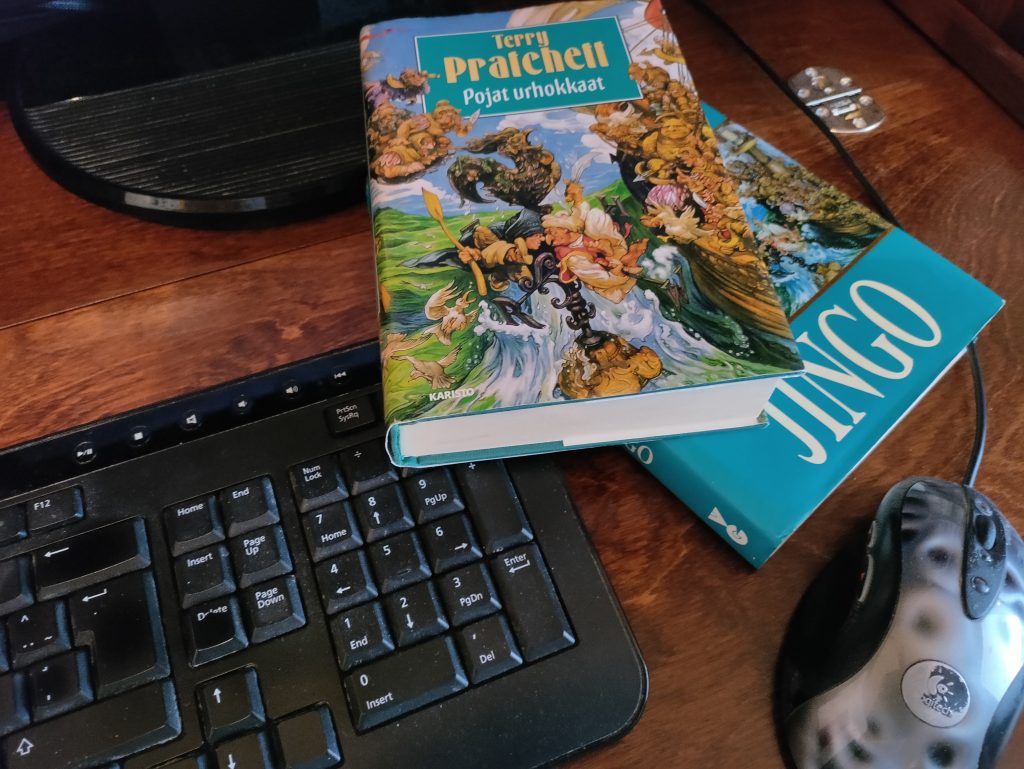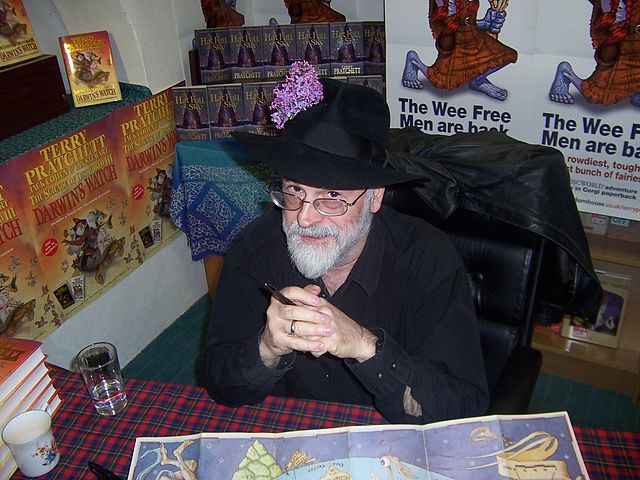
Image: Damon Tringham.
‘Translation’ as a word is a combination of two Latin words: trans, ‘across’, and latum, a conjugated form of ferre, ‘to carry’. The idea is that whatever is being translated (traditionally called the source text or ST) is lifted up and borne across by the magic of linguistic skill and cultural knowledge, to be set down in its new environment as a target text (TT), there to live out its days in service of new readers. This is certainly sort of what happens, but the process is far from straightforward.
Working in translation has a lot in common with most other work – you operate within certain limits, you try to achieve the goal, and you are paid for it. However, there’s plenty that sets it apart.
It certainly requires an emphasis on very different skills depending upon the topic you are working with. You might be required to have qualifications in law, you might need skills from the area of discourse analysis, you might need knowledge of advertising, academic writing, politics, literature – or physics, electronics, astronomy or medicine. But most of all, you need the ability to write something that is what the person who gave you the job wants – and something that affects the new readers in the right way.
If you are working in literary translation, that requires knowledge of the differences between cultures, awareness of what needs adapting and a dose of creative flair. And if you are translating an author with the abilities and wide-ranging interests of the fantasy author Sir Terry Pratchett (1948 – 2015), you will need all of those things in spades.
As a member of staff at the Department of English at the University of Turku, I have my teaching and administrative duties, but whenever possible I am moonlighting, researching into how the Discworld novels of Pratchett have been translated into Finnish from British English and ‘carried across’ to Finland from their home in the UK. Pratchett’s fantasy Discworld series, set on a flat planet and carried through space by four elephants perched atop a giant turtle, is principally one of satire, full of humour and packed with cultural references, some writ large, others near invisible to the naked brain.
My particular area of interest is how the translator has tackled cultural references in the text. Pratchett was writing principally for a British audience – how do these get transferred for the Finnish readership?
One of the joys of literary translation, and there are many (one of which is getting paid), is the creativity that you have to have with the language. But before creativity, you have to have understanding. Why did the author choose this phrase or term? Is it a description of something by the writer, or is a character speaking or thinking? What effect does it have on the reader? What effect does it have on the other characters in the book hearing or seeing it? Is it a reference (cultural issue)? Is it a pun (linguistic issue)? Is it both? Is it understandable in translation as it stands, without change, in Finnish? If not, what to do?
Fortunately, there is no shortage of theoretical advice for translators who find themselves in such a bind. If we concentrate here on cultural references, there are many articles and theses that discuss categorisations of such references and their purposes in the source text. There are also many proposals for strategies to address these different types. Here are a few.
Options for translating cultural references
Transposition is one option, which essentially means you simply take the word, words, or phrase and drop it wholesale into the new text without translation. This doesn’t require much work, clearly, but it can leave the new reader without any clear idea of what the reference is supposed to mean – and in some cases they may not even spot that it is a reference at all. On the other hand, if the reference is one that is shared across cultures, this might work perfectly well.
Another strategy is direct translation, which entails a literal translation of the source, but with minimal changes to make sure that it reads naturally in the new language. This requires a little more effort but can leave the reference disguised as it is not as obviously a reference as it was when it remained in its own language as it did with transposition above. As a result, whatever the purpose of the reference, it might no longer function as it did.
Replacement is another solution – take the troublesome bit out and replace it with something else in the new language and culture, either something that is a reference to something in the new context or some words that aren’t a reference at all but fill in the gap in the text. The problem here is that if you wish to keep the reference, you have to determine what its role was in the first place and then rack your brains to think of an equivalent that will do the same job. This requires analytical skills and a deep knowledge of both cultures.
An additional strategy would be to check to see if there is an established translation. So, if a famous line from a movie is being used as a reference, you have a look to see what the film’s subtitles or dubbing said and use that. This is also useful for, for instance Biblical quotations and similar.
This list is getting long, so although there several other strategies perhaps I’ll conclude it with the strategy nuclear option. Okay, that’s not actually its name, but for a translator it might as well be – omission. Here, you look at the source text, think about the reference, consider the problem and gradually let your head sink into your hands.
Sometimes, nothing can be done but to accept that this reference can’t be treated in such a way that it both does its job and sounds natural in its new environment. Any attempt to make it fit would seem artificial and stand out too much to the reader. Joking aside, it is actually an important skill to be able to determine when discretion is the better part of valour.
In the Discworld series, Pratchett essentially writes satire in a humorous manner and fills it with cultural references. To translate these novels well means to understand how these different elements interact with each other and reproduce them as well as possible so that the new reader experiences the satire, understands the humour and has a chance to appreciate the references. The latter is challenging – some references are clear, some more hidden, and some positively arcane. One of the elements that makes reading Pratchett so rewarding is identifying them and decoding them, and this pleasure needs to be available to the reader of the translation, too.

Image: Myrmi / Wikimedia Commons.
Jingo; or, Pojat urhokkaat
Let’s have a look at some examples involving these five strategies. The book I am currently analysing for my research is called Jingo (1997) – a satirical look at nationalism, racism and Othering at a time of war. Its plot follows several groups of characters, some seeking to instigate a war for political purposes, others endeavouring to prevent it. It involves assassination attempts, personal growth, and multiple cultural references to real world events.
The first example involves the most central issue possible, the title itself: Jingo. The storyline of the novel involves a war being whipped up between two nations over an insignificant matter, and nationalism and racism (encouraged by secretive plotters on both sides) bring the nations close to disaster. The English original refers to a (fairly) well-known music hall song from the late 1870s known as MacDermott’s War Song.
It is a profoundly pro-war and nationalistic work that calls upon the British to fight Russia if necessary and recall their role as a Great Power. It includes the following phrase, “We don’t want to fight but by jingo if we do, we’ve got the ships, we’ve got the men, we’ve got the money too!” The phrase ‘by Jingo’ was already in use as a bowdlerised version of ‘By Jesus’ or ‘By God’, but as a result of a contemporary comment by Viscount Sherbrooke, a British politician and this song, the term ‘jingoism’ was born: an extreme form of nationalism accompanied by an aggressive foreign policy.
It clearly isn’t reasonable to expect a modern Finn to understand the connection here, so the translator decided on replacement as the strategy as it was important to reflect as much of the source title’s meaning as possible.
The title was translated as ‘Pojat urhokkaat’ as this has several matching elements. The phrase, although not exact, comes from another late 19th century military song, Porilaisten marssi, where the opening line is “Pojat, kansan urhokkaan” – though here the bravery is associated with the nation, not the ‘lads’. There is another possible side-reference that the translator may well have known about, though more obscure: there is a song from 1993 called Ganjalasta kajahtaa by Pirkka-Pekka Petelius, which is itself profoundly satirical and contains the line ‘pojat urhokkaat hei!’
The translator here has done well to find a culturally significant reference (or two) that functions well as a song title and that serves a similar purpose. Regardless of the actual source of the new reference, the translator’s strategy has worked – a new reference has been created with the same effect on the reader.
As a second example, part of the plot of Jingo involves an attempted assassination of a foreign dignitary, and the way this is written makes it a parallel to the assassination of John F. Kennedy in 1963. One way in which this connection is made clear is the use of similar phrases, one of which is the term ‘lone bowman’, clearly intended to bring to mind the ‘lone gunman’ of the real event.
The Finnish translation used is ‘yksinäinen jousimies’, a direct translation that does not use a standard Finnish translation – based, for instance, on the phrase ‘yhden ampujan teoria’ (the established translation for the ‘lone gunman theory’). The reference is therefore made to stand out a little more through its strangeness, helping the reader to notice that something is there, but at the same time, is not so obvious and clear that it removes all ambiguity.
Another example from the book, this time involving a reference to silent film, involves a senior law enforcer referring to two policemen as ‘the keystones of the Watch’. Readers know that they are both largely incompetent (although the person being spoken to in the story does not), and this completes the reference for those that are aware of the American silent comedy series between 1912 and 1917, Keystone Cops. For many Finns, however, this series is more than likely completely unknown. How does a translator handle such a problem?
On this occasion, the translator has gone for ‘vartioston kulmakiviä’, a direct translation that translates the basic sense but loses the reference. Not too much could be done about this – unless perhaps the translator decided to work the phrase ‘maltti on valtti’ into the text and thereby refer to the two somewhat-less-than-competent policemen from Pikku Kakkonen instead. Here, unlike the direct translation above, the decision was to let the story continue and not risk making the reference too obvious/distracting for the Finnish reader.

Image: Wikimedia Commons.
The book also contains references to more modern film and TV. The Mission: Impossible franchise contains the well-known phrase, ‘This message will self-destruct in five seconds.’ This appears in slightly modified form as, ‘This note will self-destruct in five seconds’ in the book when one character receives a message from others, updating him on how the mission is going. The message, therefore, is not carrying out its usual function of setting up the mission at the beginning of the story, but plays a smaller role.
Nonetheless, Pratchett has chosen to use the phrase, so the translator must consider whether it needs adaptation, here opting for “tämä viesti tuhoutuu itsestään viidessä sekunnissa”. Checking the phrase used in Finnish on Netflix reveals that it is rendered as “tämä viesti tuhoutuu viidessä sekunnissa,” effectively the same as the established translation, although here we run into the issue that sometimes the subtitles for film and TV are not the same, either for reasons of space or rights issues, so variants may be possible.
In addition to political matters and film, there are also several references to a British comedian, Tommy Cooper, who died in the early 1980s. He was famous for wearing a red fez while performing and for his catchphrase, ‘Just like that!’ We encounter this in Jingo, when one of the main characters is performing a trick:
‘Donkey, minaret,’ said Lord Vetinari. ‘Minaret, donkey.’
‘Just like that? said a guard.
The first part, spoken by Lord Vetinari, is also important, as it matches the part of a performance where the magician shows the two things that he will make disappear, change places or whatever. The translator has translated the exchange as;
”Aasi, minareetti”, lordi Vetinari sanoi. ”Minareetti, aasi.”
”Ai että tuosta vain?” yksi vartijoista sanoi.
This is a direct translation that makes no attempt to create a reference in Finnish, for, as far as I am aware, the guard’s response is not a well-known catchphrase in Finnish.
However, what is interesting here is that the same character uses the same introductory phrase a little earlier in the book, where he sets up a different trick and says, “Egg, melon! Melon, egg!”, but the translator has there omitted the entire phrase. Perhaps he felt that it sounded strange in that context and opted for omission, merely translating the elements around the statement that set up the trick.
Finally, one of the countries encountered in the story is Djelibeybi. In Discworld, the name is said to be created from the name of the river that flows through the desert, the ‘Djel’, and the fact that the country owes its existence to the life-giving waters makes the nation ‘the child of the Djel’. The source text is alluding to ‘Jelly Babies’, which are British sweets, so this is a very good play on words, but it only makes sense if you know of the product.
One could perhaps try to create an alternative, such as ‘Rio de Oreo’ based upon the historical region Río de Oro (which would retain the idea of a river) and the well-known biscuit brand (something sweet to eat) but would lose the ‘child’ part. Given the difficulty here, the translator has opted for transposition and used the word as it stands, with no alteration to fit Finnish orthography or pronunciation.
***
Translation is rarely as straightforward as it may seem, and if this is true for literature in general, it is especially so for Pratchett’s work. Identifying references and analysing the role they play is at the heart of the task, but then deciding which strategy to use to convey both the reference and its purpose to the new readers needs another level of skill and cultural knowledge.
So, sometimes translators must be creative with their solutions – and be kääntäjät urhokkaat – and sometimes a Djelibeybi can only be a Djelibeybi…carry it across and the job is done, “just like that!”

Damon Tringham
The author (M.Phil.) is a university teacher at the Department of English at the University of Turku. His research focuses on culture- and humour-related issues in the translation of the Discworld novels of Terry Pratchett.
Viimeisimmät kommentit